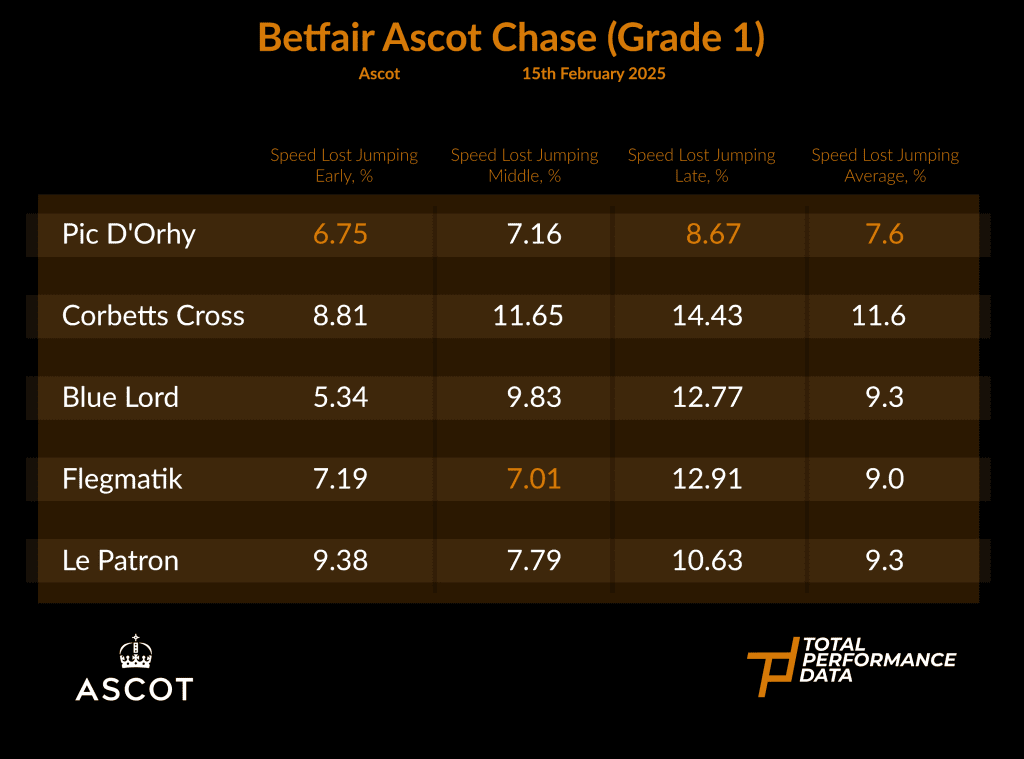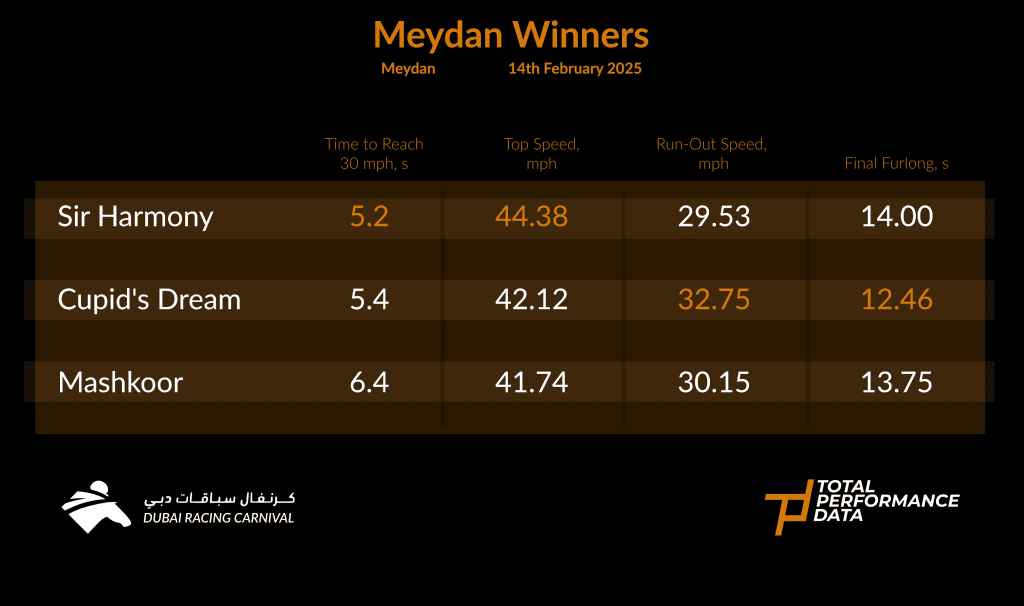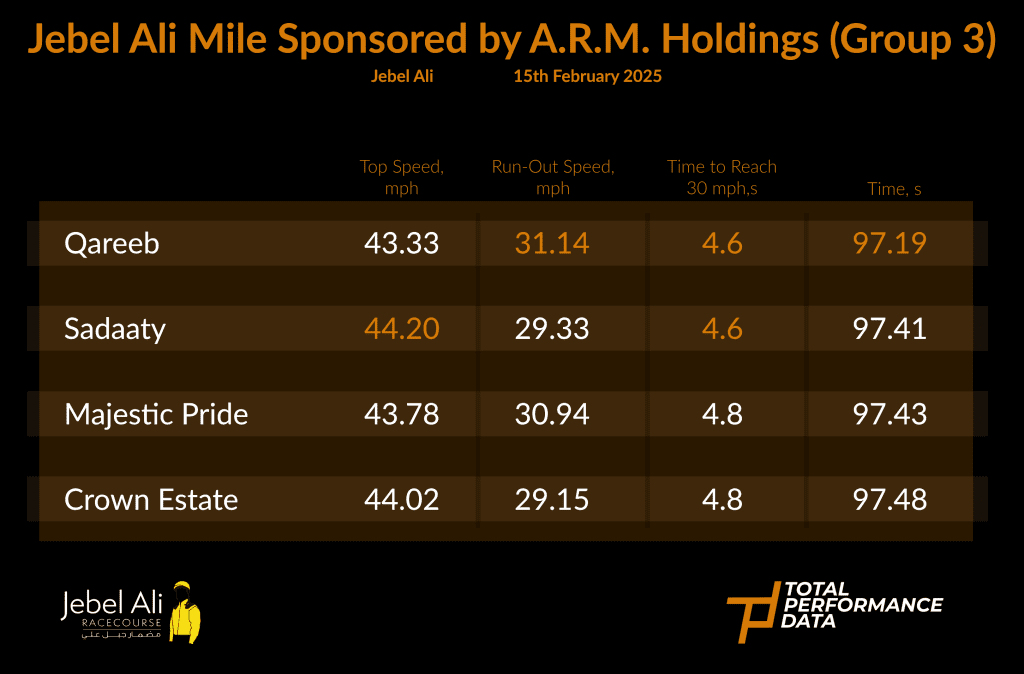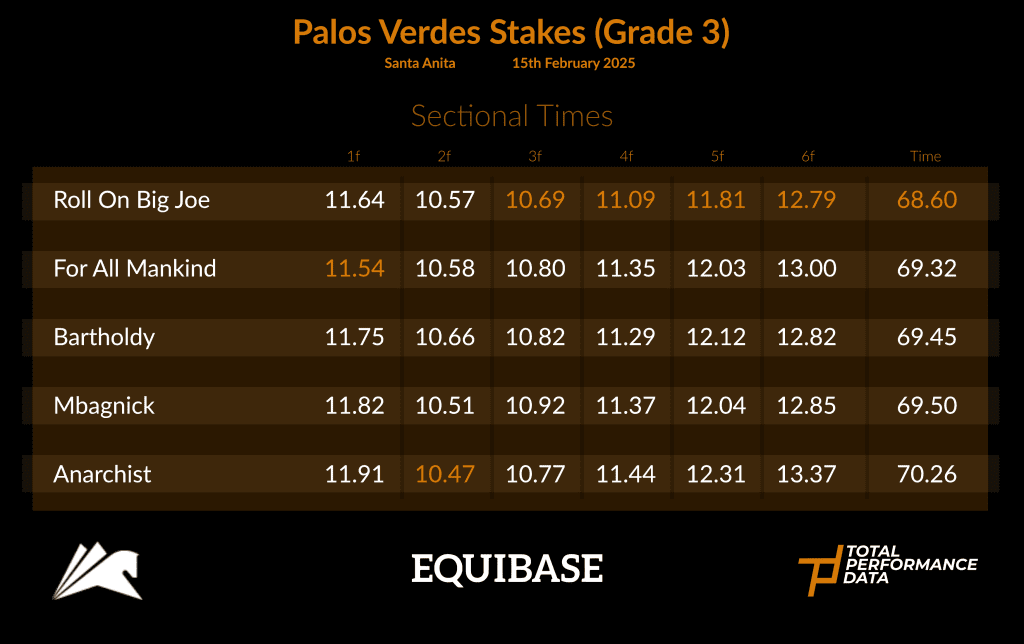Saturday’s Betfair Ascot Chase had many narratives, most notably a return to a Grade 1 winners enclosure for the first time in 12-months for Paul Nicholls. Pic D’Orhy delivered the goods in his optimal conditions, but the data from TPD shows that this race was all about his consistency, especially over his fences. I will start this week’s review there, before looking at some of the data from Dubai and the US on the dirt.
Ascot
Betfair Ascot Chase (Grade 1)


“This was our Gold Cup, and we won our Gold Cup”. Wise words from Pic D’Orhy’s owner Johnny de la Hay, who had just watched his charge deliver yet another Ascot success. An intermediate trip around the right-handed turns of Ascot clearly suits the horse very well, but this was a victory that needs to be attributed to his consistency. In particular, the jumping fluency data from TPD highlights the difference between Pic D’Orhy and his main rival Corbetts Cross. The winner lost an average of just 7.6% of his speed over his obstacles, the most efficient jumper in the field.
By contrast, Corbetts Cross lost an average of 11.6% and got gradually worse over his obstacles as the race wore on. Both Corbetts Cross and Blue Lord clocked faster top speed figures than the 33.2 mph recorded by the winner, but both were losing ground on the winner over their obstacles and that proved to be more important. It might seem like a small difference, but when we allow for the fact that Corbetts Cross traveled at an average speed of 29.77 mph, that means that he lost 1.19 mph more than Pic D’Orhy at every fence on average. Pic D’Orhy ran a winning time of 5:15.20, more than 10-seconds faster than when winning this race 12-months ago (5:25.30 on Good to Soft in 2024) and set a fair pace throughout, coming home in a finishing speed of 98.91%.
However, in a race with 16 fences (1 omitted), losing so much speed at each obstacle was always going to leave Corbetts Cross with too much ground to make up. There is a fair amount of evidence that the runner-up will appreciate a longer trip too. He ran the fastest final furlong in 15.79s and his run-out speed of 28.36 mph was the fastest in the field, but the data from TPD suggests that he needs to significantly improve his jumping to be able to make his mark in Grade 1 company.
L’Homme Presse disappointed here, but having pulled-up after 7 fences, it is impossible to learn anything significant from his data as he was losing time on the winner from the 3rd furlong onwards. Perhaps a 3rd race in the space of 7-weeks was a step too far? Blue Lord has taken a step in the right direction and the evidence would suggest that this is a more suitable trip for him now, but he was readily outpaced by the winner in the final 4-furlongs and he seems unlikely to win in Grade 1 company now.
Meydan


I have spoken previously in this blog about the need to get a prominent early position on the dirt course at Meydan and this Friday’s meeting proved that point perfectly. I’ll start with Sir Harmony, who was an “all-the-way” winner of the Lincoln Nautilus stakes. He broke well from the stalls to lead after a furlong, starting in 13.53 and 10.40s and taking 5.2s to reach 30 mph.
Once in front, he has maintained a strong pace and over the next 4-furlongs of the contest he has run the fastest individual furlong on 3 occasions. Turning into the straight, he might have been expected to have paid for those exertions, but he has kicked again, running 12.17 and 12.54s for the two penultimate furlongs even though his average stride length and stride frequency are decreasing from their race peaks. A final furlong of 14-seconds exactly saw him ranked only 5th, but he had built up such an advantage by that stage that he was able to last home. This was a significant improvement on his earlier form, although he had won a maiden at Jebel Ali over 6-furlongs in January where he had stayed on well up the hill, producing the fastest split in each of the last 4-furlongs. He clearly enjoyed being able to lead and use his stamina to good effect, but there is a question mark as to how much improvement he found when compared to the advantage of being able to race with the track bias in his favour.
Later on the card, both Cupid’s Dream, a very apt winner on Valentine’s Day and Mashkoor were winners on the dirt course having raced prominently, with the early leaders in those races (Magic Petition and Havandi) both holding on to finish in the places despite setting a fast pace. Cupid’s Dream has been steadily improving and on Friday he produced a career best which included both his longest average stride length (22.93 ft) and his highest average stride frequency (2.46 strides per second), so there are reasons to be encouraged by his overall performance, but there is no doubt that there is an advantage to be had if a horse can break quickly on the dirt course. With that in mind, there are a couple of unlucky losers that I feel are worthy of note from Friday’s races on the dirt.
Firstly there’s Manea, who finished 5th in the Lincoln Nautilus race. He was sent off at odds of 50/1 in the International markets for his debut in January when he failed to see out his race behind Heart of Honor (finished 9th having tired badly in the closing stages), but he produced a much better effort on his 2nd start on Friday. Although slowly away, taking 6.4s to reach 30 mph, he made eye-catching late headway from the rear of the field, coming home in 12.86 and 13.04s, the fastest final furlong in the field and 0.64s faster than the winner over the last 2-furlongs.
He is still learning his craft and shapes like a horse who will appreciate further, especially given that his best individual furlong time of 10.70s was considerably slower than most of his rivals. However, he stuck to his task well and maintained his stride frequency in the home straight between 2.13 and 2.17 strides per second. It is also worth noting that he had the longest average stride length in the field over each of the last 4-furlongs and given that he has run against the track bias over what looks to be an inadequate trip, there should be races to be won with him as he gains experience.
At the age of 9, it is hard to call Mouser an improver, but he was a winner at Sharjah on his penultimate start and he has probably bettered that form when finishing 3rd behind Mashkoor on Friday evening. Drawn wide in stall 15, he took the same time as the early leader Havandi to reach 30 mph (5.8s), but the wide draw forced his jockey to drop into midfield. That wasn’t ideal in a race dominated by the front runners, but he came home strongly in 13.23 and 13.48s, increasing his average stride length to 7.25m in the final furlong at a time when everything else was tiring. He is very exposed at this stage of his career, but he is a horse in form and with a better draw should remain competitive next time.
Jebel Ali
Jebel Ali Mile sponsored by A.R.M Holdings


Having finished 3rd behind Swing Vote in this race 12-months ago, it is hard to argue that Qareeb wasn’t winning this out-of-turn. He has been a largely consistent horse since switching to the UAE and after some solid efforts at Meydan this season, including a 4th placed finish behind Walk of Stars in the Al Maktoum Challenge (G1) at the end of last month, this race looked to be a natural next step. However, despite breaking well under Silvestre de Sousa, taking just 4.6s to reach 30mph, his chance looked to be gone when Crown Estate and Sadaaty kicked 3-lengths clear with 2-furlongs to run. However, De Sousa kept pushing away and his mount rallied as the 2 leaders drifted into the middle of the course. With a recorded top speed of 43.33 mph, he was slower than the 3 horses to chase him home, but Qareeb stays well and is really suited by a strongly run mile like this. He produced a run-out speed of 31.14 mph, the best in the field and was comfortably on top at the line.
Santa Anita
Palos Verdes Stakes (Grade 3)


Roll on Big Joe was a comfortable winner of this Grade 3 event under Umberto Rispoli and his victory can easily be attributed to his cruising speed. He ran the fastest split in the field for each of the final 4-furlongs and once in front, he was always likely to dominate. At 23.75 ft, his maximum recorded stride length was considerably shorter than his main market rival Bartholdy (26.38 ft), but he has a much higher stride frequency, averaging 2.48 strides per second throughout the contest and that allowed him to get his rivals out of their comfort zone from an early stage.
Once he had seen off his rival for the early lead, the eventual runner-up For All Mankind, he was able to use his speed to take over 0.5s out of the rest of his rivals in the 3-furlongs leading into the closing stages. Both the runner-up and the 3rd placed horse had higher run-out-speeds, but neither of them had the early speed to keep themselves on terms and the tight bends of Santa Anita look to suit Roll on Big Joe perfectly. Bartholdy was sent off at odds of 2.75 for this race and may be perceived to have disappointed, but although he had previously won over this 6-furlong distance, the nature of this race didn’t suit his long stride and he may now be ready for another try over a longer trip.
His average stride length is consistently above 25 ft, but he lacked the early speed of his main rival here and that meant he wasn’t able to dominate the race as he had on his 2 previous starts. As a result, he was off the bridle by the time the field reached the far turn and although he battled on to finish 3rd, he was never likely to catch the winner. He has been tried over a longer trip in the past, but those races came on the turf and he has looked to be a much improved horse since switching to the Knapp yard and racing on the dirt, so that may prove to be an avenue that his new connections can try to exploit in the future.
You can find sectional times, stride data, speed statistics and jumping performance metrics on the At The Races RESULTS page.
The global database of sectional times, stride data and performance metrics is available through Total Performance Data.